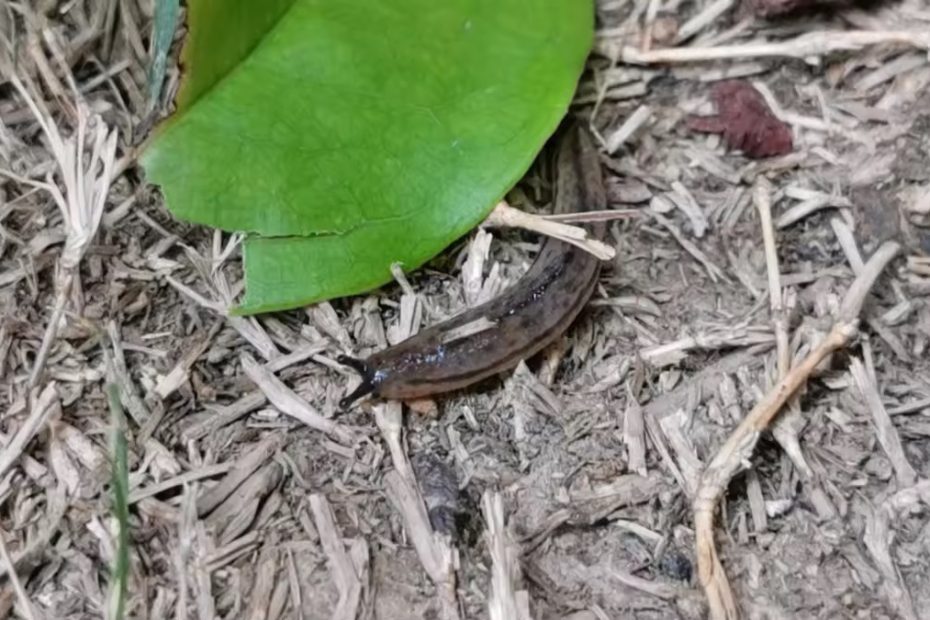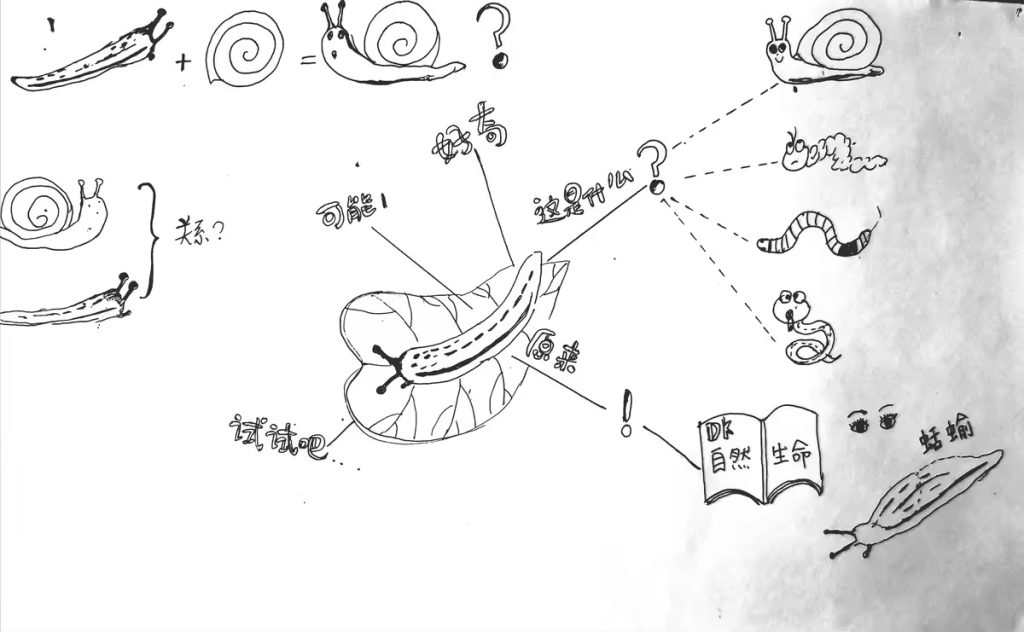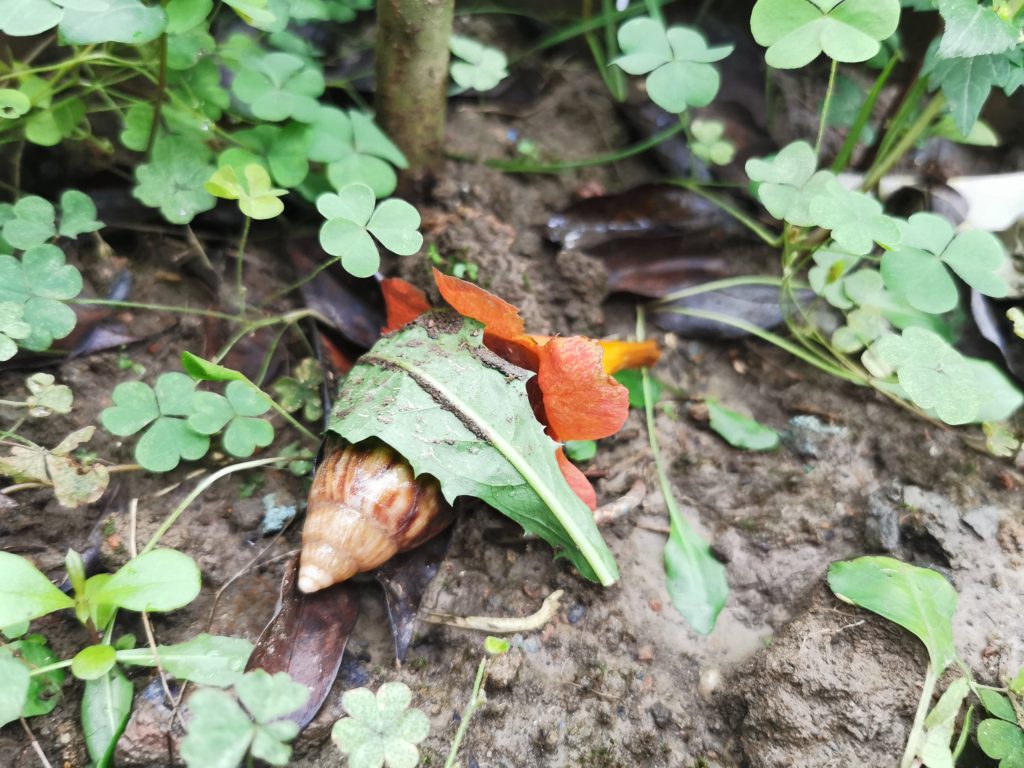By Fangfang Xiao, translated by Qin Shu
One morning, after a rain, teachers Yue and Qi found a small mollusk, without a shell, climbing on the osmanthus tree. They quickly drew children around and sparked a discussion. The next day, Zhou brought a book called Life Story in which everyone found the answer to the question of the animal’s name.— “It’s a slug!”, one of the mollusks. After that, another question arose—”Is there any relationship between snails and slugs since they are so similar to each other?” The questions continued, but the answers did not end the children’s doubts.
The doubt and the Experiment
Children have their own thoughts on the relationship between snails and slugs: Zhou thought that slugs are snails that shed their shells when they grow up . Le considered that the snail sheds its shell and becomes a slug when the weather is hot…… With the help of the teacher, the children recorded their thoughts by drawing a four-grid comic. After that, the children became curious about the relationships between turtles, snails, crabs and snails, and other seeming animal ‘cousins’ – which led to their seeking more information.
For example, Zhou talked with his father about what happened in kindergarten. His father told him that the snail is afraid of salt, and that when sprinkled with salt, it will dehydrate or even die. Peng got information that the snail may be afraid of vinegar. In seeking out information, the children found that they might easily know more about the slug if they use salt or vinegar. They were full of curiosity about this matter and told the teacher that they wanted to do experiments. After a series of reflections and debates about whether the experiments with salt and vinegar would be good for the animals, the plan to do experiments was abandoned.
For the rest of the time, the children took care of the slug in the kindergarten and planned to take turns bringing it home on weekends. In this way, they encountered many problems.
Getting to know the snail
Story 1: Will a snail die in a bath?
Anan’s brother told her that snails are afraid of water and that we cannot bathe them. Anan had doubts about this because every morning, the teacher bathes the snails kept in the classroom! After a series of readings and with help from his teacher, Anon found that “Snails like dampness but are afraid of water. His teacher reassured him that, “It should be fine if it is not submerged in water.” They also learned that baby snails can swim. During the discussion, everyone came to have a deeper understanding of the relationship between snails and water.
Story 2: Why do the snail tentacles droop down?
When taking care of the snail, Anan‘s father found that the snail was asleep when tentacles drooped down. After sharing this interesting discovery with classmates, everyone was paying attention to this phenomenon and praised Anan’s father for being good at observing. As a bridge, the children also made parents pay more attention to the creatures around them and to the earth, which was also a surprise (the children becoming the teachers!).
Story 3: Snails and Eggs, Birth and Death
One day, the snail laid eggs. Children began to think about how to hatch eggs. They separated the eggs for the children to take home. They also made up a jingle: Snails and eggs, eggs and snails. Snails and eggs, eggs and snails. Snails and eggs are endless!
But life is always like this: there is birth, and there is death. One morning, when the teacher went to take the snail out for a bath, she found that the snail was not moving, and there was yellow mucus next to it. It had died. Children felt sorry for the snail and decided to bury it on the roof garden. They also decided that they must take better care of the remaining snails and eggs.
Story 4: Will it wake up after it died?
Lele thought the snail didn’t die and that maybe it just wanted to take a rest. Anan suggested putting the snail in a damp place upstairs. If the snail is not there the next day, it means that it has been cured by bugs and has crawled to other places.
In the end, the children put the dead snail in its favorite flower and drew pictures of the story of getting along with it. Even when it passed away, there was still a poetic care for the little life. In the process of observing, learning about, and caring for snails, the children experienced a special relationship between themselves and nature, a relationship they can build on forever.
Author Bios
Fangfang Xiao is a kindergarten teacher with 9 years’ experience in Wenyijie kindergarten in Xihu district, Hangzhou City.
*This article is translated by Qin Shu. Qin Shu is a kindergarten teacher with 8 years’ experience in Wenyushun kindergarten in Xihu district, Hangzhou City.






